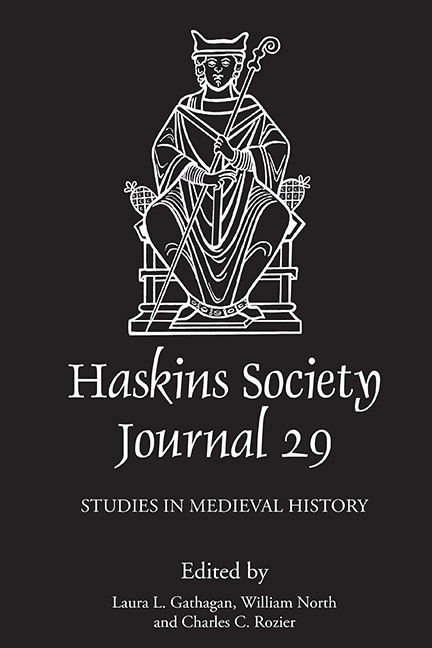Book contents
- Frontmatter
- Contents
- List of Figures and Tables
- Editors’ Note
- Abbreviations
- 1 The Longue Durée of a Symbolic System: Mounted Warriors and Horses in the Chronicon Salernitanum
- 2 Revolution(s) of Writing: Northern France, Tenth–Fourteenth Centuries
- 3 Slave or Free: The Aehtemann in Anglo-Saxon Rural Society
- 4 Norman Ducal Property in the Tenth and Eleventh Centuries: A Spatial and Chronological Analysis
- 5 The Codex Wintoniensis in its Twelfth-Century Context
- 6 The Carmen Ceccanense: A Neglected Source for the End of the Norman Kingdom of Sicily, Introduction – Edition – Translation
- 7 Succession and Interregnum in the English Polity: The Case of 1141
- 8 Crusading Participation in Normandy and its Borderlands: The Evidence from the Old French Traditions of the First Crusade
- 9 The Domesday Controversy: A Review and a New Interpretation
5 - The Codex Wintoniensis in its Twelfth-Century Context
Published online by Cambridge University Press: 15 October 2019
- Frontmatter
- Contents
- List of Figures and Tables
- Editors’ Note
- Abbreviations
- 1 The Longue Durée of a Symbolic System: Mounted Warriors and Horses in the Chronicon Salernitanum
- 2 Revolution(s) of Writing: Northern France, Tenth–Fourteenth Centuries
- 3 Slave or Free: The Aehtemann in Anglo-Saxon Rural Society
- 4 Norman Ducal Property in the Tenth and Eleventh Centuries: A Spatial and Chronological Analysis
- 5 The Codex Wintoniensis in its Twelfth-Century Context
- 6 The Carmen Ceccanense: A Neglected Source for the End of the Norman Kingdom of Sicily, Introduction – Edition – Translation
- 7 Succession and Interregnum in the English Polity: The Case of 1141
- 8 Crusading Participation in Normandy and its Borderlands: The Evidence from the Old French Traditions of the First Crusade
- 9 The Domesday Controversy: A Review and a New Interpretation
Summary
The Codex Wintoniensis is one of the most magnificent surviving medieval English cartularies. Begun at Winchester cathedral priory in the first half of the twelfth century, the Codex contains the copies of nearly 250 Anglo-Saxon charters related to the cathedral's endowment. The manuscript is large (395 x 280 mm), and its contents were completed in monumental script. Throughout it is adorned with colored and decorated initials. The manuscript was bound in a splendid mid-twelfth-century stamped-leather binding, until this was removed in 1961; both the cartulary and this binding are now held in the British Library. The documents within the cartulary amount to approximately 10 percent of the total number of extant pre-Conquest English charters, making the Codex one of the most important sources for the study of Anglo-Saxon England. However, additional significance lies in the manuscript's creation. The compilers at Winchester cathedral (also known as Old Minster) collected, selected, and organized a vast number of documents to create a composite record of their ancient endowment. In doing so they produced one of England's earliest and most voluminous cartularies. The Codex Wintoniensis thus provides invaluable insight into the ways in which cartularies were produced in post-Conquest England, as well as how this community viewed and reused its Anglo-Saxon past.
This article seeks to fully analyze the production of the Codex Wintoniensis within the context of early-twelfth-century Winchester cathedral priory. Although previous studies of the Codex have focused on specific charters within the manuscript, and the various stages in its construction, it is still not fully known what functions the Codex may have had at the time of its production, nor why they were pursued through this from of literary composition. The coming discussion will consider the contents and arrangement of the Codex Wintoniensis within fresh historical and interpretative settings, first through a brief comparison with other contemporaneous English cartularies, and then with an analysis of how the Codex's contents reflect the purposes of the text. The conclusions will argue that although the Codex may not meet our expectations for a cartulary, through its construction the compilers reorganized Old Minster's documentary past to directly address the priory's current concerns.
- Type
- Chapter
- Information
- The Haskins Society Journal 292017. Studies in Medieval History, pp. 115 - 138Publisher: Boydell & BrewerPrint publication year: 2018
- 1
- Cited by

